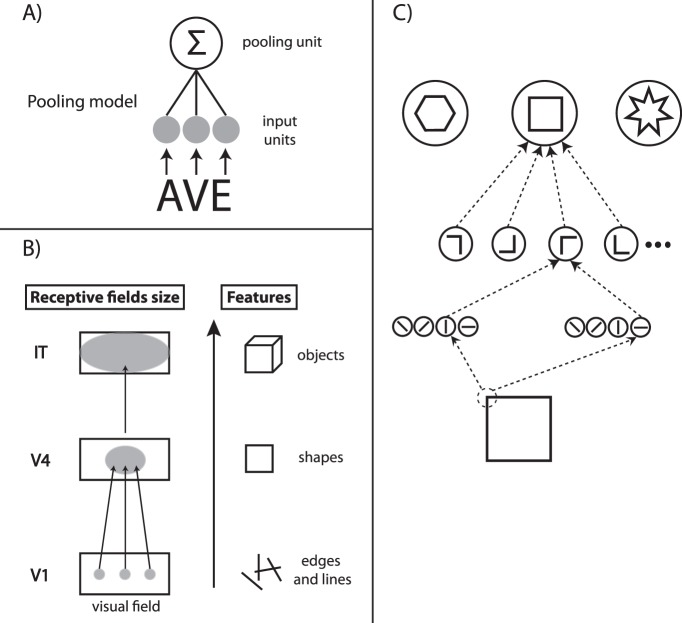Figure 1.
(A) Basic pooling model. Elements (e.g., letters A, V, and E) activate input units that subsequently feed into a pooling unit. Because of the larger receptive field of the pooling unit, the features of the letters are jumbled. (B) Neurophysiology. Neurons in V1 are sensitive to simple features such as edges and lines. In higher visual areas, neurons are sensitive to more and more complex features, such as simple shapes in V4 and objects in IT. Receptive field sizes increase from lower visual areas to higher visual areas. (C) Hierarchical models of object recognition formalize the neurophysiological findings (see, e.g., Riesenhuber & Poggio, 1999). Stimulus processing starts with the analysis of very simple features (edges and lines) and proceeds to more and more complex visual representations (shapes). A hypothetical “square neuron” receives input from neurons tuned to angles, which in turn receive inputs from basic line detectors. Receptive field sizes increase as they integrate more and more information across the visual field. At each step in the hierarchy, only signals from the previous areas are combined. Responses in higher areas are fully determined by the input from lower areas. Information lost on early stages is irretrievably lost.

